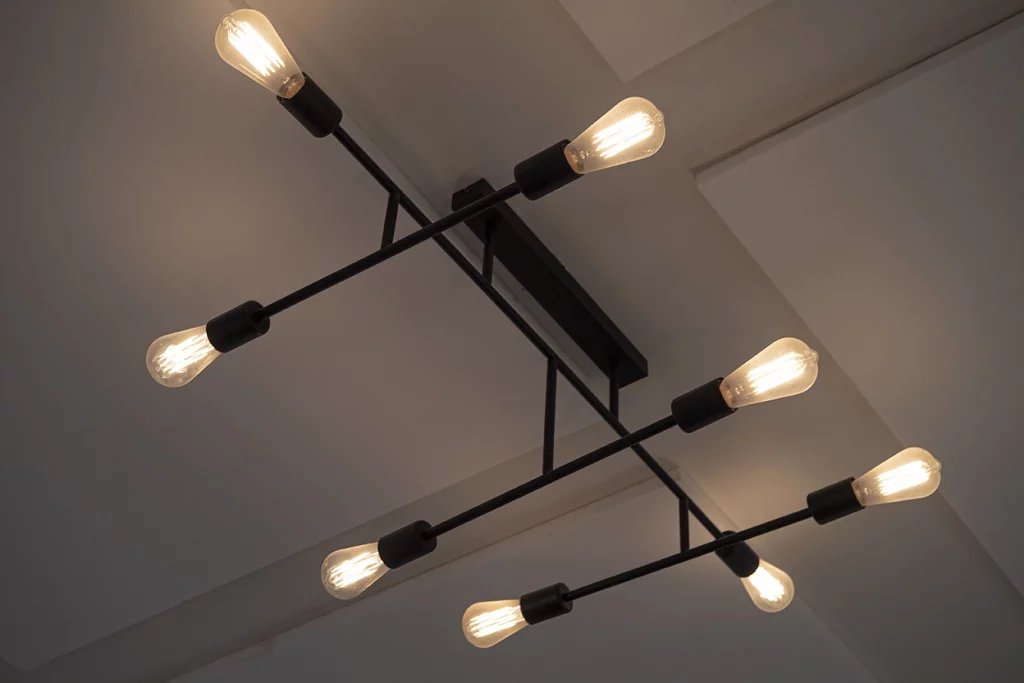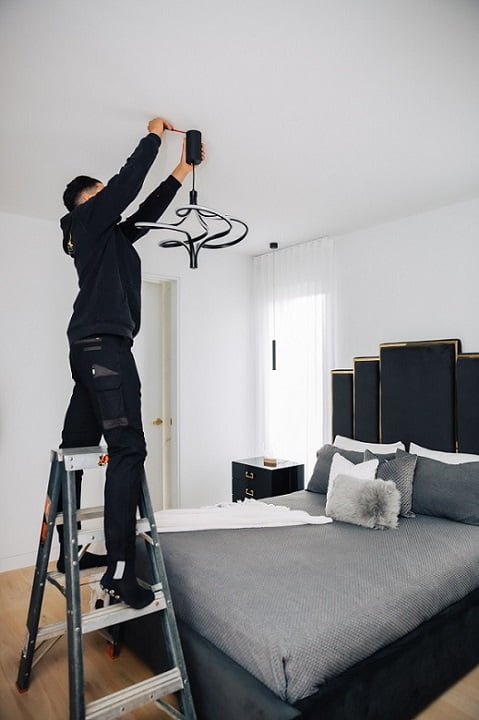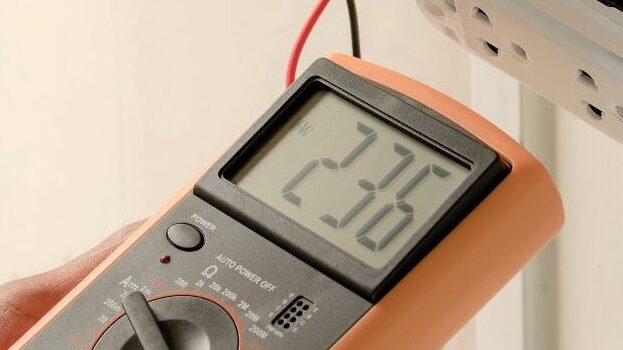Discover and Resolve the Reasons Behind Your LED Light’s Unanticipated Dimming
Immediate Action Steps:
If your LED light has unexpectedly dimmed, the main culprits often include voltage fluctuations, excessive load on circuits, overheating, poor electrical connections, or even using subpar LED bulbs. Continue reading for comprehensive solutions to effectively address this problem.
Delve into the Top 5 Reasons for LED Light Dimming and Effective Remedies
LED lights are renowned for their durability, often marketed to last for years without failure. Yet, some may not even survive a single season. Whether you’re dealing with kitchen downlights, decorative garden fixtures, or festive Christmas LED lights, experiencing sudden brightness reduction can be both perplexing and frustrating. This extensive guide will investigate key factors causing LED dimming and equip you with safe, actionable troubleshooting techniques to restore your lighting to optimal brightness.

1. Understanding How Voltage Drops Lead to Unforeseen LED Dimming
The primary reason for LED lights dimming unexpectedly is often linked to a voltage drop. When the voltage supplied to the light fixture decreases below the necessary threshold for optimal LED performance, you will notice a significant drop in brightness. So, what causes this voltage drop?
- Temporary outages or fluctuations in the power grid
- Local circuits experiencing overload due to too many devices
- Long wiring runs utilizing inadequate, thin cables
- Faulty switchboards or subpar connections
Voltage drops present considerable challenges, particularly with affordable LED lights, which often lack effective voltage regulation and can be more susceptible to minor voltage variations. For a long-term solution, consider upgrading to higher-quality products that ensure consistent performance.
Also Read: 10 Ways to Save On Power And Energy Costs
2. Effective Strategies to Identify Overloaded Circuits in Older Homes
Overloading electrical circuits by connecting an excessive number of appliances or devices can severely strain your power supply. When a circuit fails to meet the demand, the voltage is unevenly distributed across devices, leading to dimming lights, particularly in sensitive LEDs. This issue is especially prevalent in older homes constructed before the advent of modern, energy-intensive technologies. Signs of overloaded circuits typically include:
- Flickering lights, indicating instability
- Buzzing sounds emanating from switches
- Dimmed lighting, particularly in budget-friendly LED options that may lack necessary protective features.
Schedule a Quote Today and Ask About Our FREE Electrical Inspections
3. How to Resolve Issues Caused by Loose Connections and Damaged Wiring
Inadequate power delivery can stem from loose connections or aging wiring. If your light dims or flickers upon adjusting a switch or device, it could suggest loose connections. Here are some critical areas to check:
- Ensure the bulb is securely installed
- Watch for flickering at the wall switch
- Look for burn marks, discoloration, or strange buzzing sounds
Important Note: Many low-cost LED lights incorporate thin or inferior internal wiring, rendering them more susceptible to failure from heat or movement. Regular inspections and maintenance are essential to prevent unexpected issues and ensure safety.
Also Read: Keep Your Pets Safe Around Electricity
4. Understanding the Risks of Overheating in LED Lights
While LEDs generate less heat than traditional incandescent bulbs, they still require efficient heat dissipation to function correctly. If an LED overheats, it will dim automatically as a protective measure. Overheating can result from various factors, including:
- Enclosed light fixtures that restrict airflow
- Defective heat sinks, especially in lower-cost models
- Excessively high ambient temperatures
- Insufficient air circulation surrounding the fixture
If the housing of your LED light feels hot to the touch, it is likely suffering from overheating issues. This problem is particularly common with inexpensive, poorly ventilated LED downlights or garden lights installed in direct sunlight without adequate thermal safeguards.

5. Examining How Lumen Depreciation Causes LEDs to Dim Over Time
Even the best quality LEDs will gradually lose brightness over time due to a phenomenon known as lumen depreciation. High-quality LEDs can maintain about 70% to 90% of their brightness after approximately 50,000 hours of operation. Conversely, cheap LED products may start to show signs of fading after just 5,000 to 10,000 hours, often doing so unevenly. If your light seems to be:
- A budget model, it may simply be nearing the end of its usable life.
- Many years old and heavily used
- Frequent in use and exhibiting signs of wear
Understanding Why Budget LED Lights Experience Premature Failures
During holiday seasons, inexpensive LED lights flood the market, available in various forms such as string lights, recessed lights, garden decorations, and more. However, the potential risks associated with these products include:
- Inconsistent voltage tolerance: making them susceptible to dimming and flickering issues
- Poor heat management: heightening the risk of overheating
- Low-quality drivers: which fail to effectively regulate electrical current
- Lack of weatherproofing: making them unsuitable for outdoor use
Holiday Shopping Tip: When buying LED Christmas lights, opt for products that feature:
- IP65+ waterproof rating
- Certification compliance marks (e.g., RCM)
- Reputable brand names (steer clear of lesser-known bargain brands)
While opting for cheaper lights might seem like a money-saving strategy at first, they can lead to higher costs related to replacements, safety, and long-term frustration.
Proven Methods to Eliminate Dim LED Lights
Conduct a Thorough Inspection for Loose Connections and Signs of Overheating
Begin by examining your light fixture closely. Is the bulb securely in place? Are there visible signs of fraying, corrosion, or damage? If you notice anything unusual, do not attempt self-repairs, especially if wires are exposed or if the fixture appears burnt or melted. Gently touch the fixture; if it feels excessively hot—think “it-could-cook-an-egg” hot—that is a significant warning sign. Overheating fixtures can pose serious hazards and may need replacement.
Need assistance? We are Beacon Lighting Recommended Electricians, and installing and replacing LED fittings is our area of expertise. Whether you’re located in Braybrook, Yarraville, or nearby, Electrx can address the issue safely and promptly.
Utilize a Multimeter to Assess Voltage Levels
If your LED is dim due to insufficient voltage, using a multimeter can help pinpoint the issue. Testing the voltage at your LED fixture will reveal whether your lights are receiving the necessary power supply. Compare the voltage reading with the recommended specifications for your specific LED lights. If the voltage is below the required level, this could explain the dimming. Should you consistently find low voltage readings, you may be facing a larger electrical issue and should reach out to a qualified electrician for further investigation.
If you detect low voltage across multiple fittings, a more significant wiring or switchboard issue is likely at play.

Review the Settings of Your Dimmer Switch
We often receive inquiries similar to this:
“Why is my light dim?”
Us: “Do you have a dimmer switch?”
Them: “…oh.”
Ensure that no unintentional adjustments have been made to the dimmer, or check for compatibility issues with your LED model.
Evaluate the Circuit by Turning Off Other Appliances
Try switching off all other devices connected to the same circuit as your LED lights. If your lights become brighter, you’re likely facing an overloaded circuit. Consider implementing the following solutions:
- Redistributing devices across different circuits to balance the load
- Upgrading your switchboard for enhanced performance
- Replacing budget LEDs with more energy-efficient options
Also Read: Electrical Upgrades For Your Office
Replace the LED Bulb if Necessary
If none of the above solutions fix the problem, your LED may simply be approaching the end of its useful life. Test the bulb by replacing it with another LED bulb from your home. If the new bulb restores full brightness, the old bulb likely needed replacement. If changing bulbs does not resolve the issue, the underlying cause is likely located elsewhere.
Essential Considerations Regarding LED Dimming Problems
So, why did your LED light suddenly dim? The potential causes could include:
- Voltage drops interfering with performance
- Loose connections disrupting power flow
- Heat accumulation affecting functionality
- Circuit overload due to excessive devices
- Or the LED itself—especially if it is a budget model
With this comprehensive guide, you now have the insights needed to identify and rectify the situation.
However, if you are uncertain or notice any signs of damage, never compromise on electrical safety.
Let Electrx Provide You with Professional Electrical Assistance
We are licensed electricians and recognized installers for Beacon Lighting. Our services encompass:
- Testing and replacement of LEDs to ensure safety
- Circuit diagnosis to identify and resolve issues
- Solutions for problems related to overload and overheating
- Safe, long-lasting electrical upgrades for your residence
If you have any doubts regarding electrical matters, consulting a professional electrician, such as Electrx Electricians, is always a sound decision. Reach out to us today for expert assistance.

Commonly Asked Questions About LED Troubleshooting
Q: Why is my new LED bulb dim right out of the box?
A: This could be due to a voltage drop, faulty wiring, or a low-quality LED that does not provide adequate voltage regulation. Consider replacing it with a higher-quality LED first to see if that resolves the issue.
Q: Do budget LED lights dim more quickly than others?
A: Yes, indeed. Inexpensive LEDs frequently lack sufficient heat sinks and stable drivers, leading to premature lumen loss, flickering, and dimming—especially in warm or outdoor environments.
Q: Why do my Christmas lights flicker and become dim?
A: Seasonal LED string lights are often constructed using lower-grade components. Environmental exposure, excessive usage, and power surges can all contribute to brightness loss. Always opt for outdoor-rated, certified lighting to ensure durability.
Q: Can I troubleshoot dimming LED lights on my own?
A: You can check for loose fittings, test voltage levels, and swap out the bulb. However, if the problem persists—especially across multiple fittings—it’s best to contact a licensed electrician for professional help.
The Article: LED Light Dim? Discover the Reasons Behind It first appeared on https://writebuff.com
The Article LED Light Dim: Uncover the Causes of Dimming Issues Was Found On https://limitsofstrategy.com

